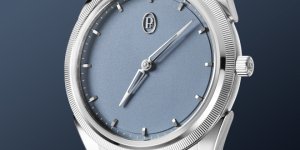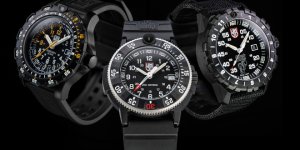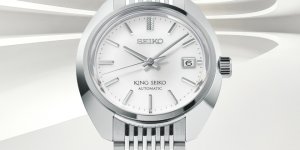Deep dive into natural and detent escapements of watches
The lever escapement is by no means the only arrangement for the regulating organs of the wristwatch. We look at just two largely historical forms here.

This historical Breguet table clock exhibits all manner of clever mechanisms, including a constant force escapement and a detent escapement. In relatively immobile timekeepers, the detent escapement would have hit its stride. Image: Breguet
The story of the wristwatch escapement spins hard and fast, not always aiming for absolute precision. In presenting the basics of the beating heart of the mechanical calibre, we have only covered the basics. Considering that watch brands keep throwing research and development into this area, there will likely always be more to cover. No one expected the Zenith escapement when it was first announced, for example. Even in 2020, there is a new escapement in play, thanks to Seiko — but more on that specific development later. Believe it or not, there is more to cover in terms of escapement approaches already out there in the world.
In this story, we will be covering the natural escapement and the detent escapement. These two are somewhat related, which is why we opted to group them together. We will not be covering single-beat escapements overall, instead folding this type of regulating organ into the detent section. The reasons will become obvious once you get into the detent escapement, if you do not already know them.
As we previously noted in our coverage of the verge escapement, there were a few escapement ideas that preceded the Swiss lever, including a number that were in use before Christiaan Huygens pioneered the balance spring, ultimately perfecting it in 1675. We pause here for a moment to be clear that English scientist Robert Hooke (of Hooke’s Law) also has a claim to the balance spring but Huygens definitely had one built to his specifications.
While we pause to take stock, we also note that this story works best with an understanding of the basics of the escapement. A short summary is included here, for convenience.
The rest of this story is divided into a few parts, including the aforementioned sections on the two related escapements. We had planned to include a section on contemporary watches featuring these somewhat archaic and quite rare technologies, but it was not to be. It is a fact that these sorts of escapements are the rarest of all non-Swiss lever escapements out there.
As mentioned earlier, Grand Seiko is debuting an original escapement this year, but we will reserve that for our next story on escapement, when it can shine as the star of the show. To our knowledge, it is the only new type of escapement for 2020, a year that will definitely be the most unbalanced (so far) in the new millennium. It is important to note here that the new 9SA5 calibre features a dual-impulse escapement. So although it might remind some observers of variations on the detent escapement theme, it is most assuredly not that type of escapement.

A contemporary illustration of how the Earnshaw detent escapement works. Image: Cvetkovic, Stojicevic, Popkonstantinovic
We end this introduction with a note about pricing. Pioneering escapement technology is no easy matter, and the costs can be significant. Every press release about the development of such exotic regulators as the Girard-Perregaux Constant Escapement or the Zenith Oscillator implies tremendous research and development expense.
To illustrate this point, let us take a look at a specific example relevant to this story. The Urban Jurgensen 1140C, is an excellent case in point. This watch has a recommended retail price of EU48,100 in rose gold (excluding VAT). This contrasts with the 1140 RG Brown also in rose gold, which goes for EU28,200 (excluding VAT); this version has a regular Swiss lever escapement.
While there is no way to know if the difference in prices is down to the movement, you can certainly expect to pay a premium for special escapements. They are certainly worth more, being far from vanilla, but how much more depends on where you stand on the value such developments add.
Détente: the most reliable mechanical systems for watches

The famous Harrison H4 chronometer
The escapement with the most poetic name, it is also one of the most reliable mechanical systems for watches in motion. So, in anything that is not a pendulum clock, the detent escapement is the precision winner. If you take it further, put a pendulum clock on something that rocks about, like a ship, and its accuracy takes a major hit. The timekeeper with the detent escapement does not have this problem. Indeed, Huygens came up with the pendulum clock in part to create a precise and accurate marine chronometer. Once the clock was tested upon the high seas, it was back to the drawing board, and to some cross-Channel rivalry.
John Harrison had developed a marine chronometer regulated by a verge escapement that worked well in theory. His H4 watch won the longitude race between English and French watchmakers, but it was difficult to reproduce. Larcum Kendall, the watchmaker engaged by the Board of Longitude to reproduce Harrison’s design, found it impossible to mass-produce while keeping costs down. Part of the problem was Harrison’s exotic parts for the time — he used diamonds for the pallets — but the other was the sensitivity of the verge escapement.
In France, watchmaker Pierre Le Roy had delivered a promising escapement as early as 1748 that could have been the solution to making the chronometer easier to produce. English watchmakers John Arnold and Thomas Earnshaw (likely separately) got hold of this design and improved upon it to create what would be called the detent escapement.
The verge and lever escapements both work based on the gear train giving and receiving energy through two contact points, which is easy enough to understand given that the anchor has two arms that contact the escape wheel of the gear train at two points. That also means that the balance receives energy in the form of dynamic force twice — once per swing. This is an indirect way to deliver a way to impulse or power the balance. What if the balance spring and wheel could interact directly with the escape wheel, without an intermediary?
Arnold, Earnshaw, Le Roy and Ferdinand Berthoud knew that friction was the main enemy of accuracy in the mechanical timekeeper. All these watchmakers were key figures in the chronometer side of watchmaking i.e. the pursuit of chronometric excellence. Le Roy, Arnold and Earnshaw’s innovation here was figuring out how to reduce contact between the balance and the escapement; Berthoud’s achievement was a double balance wheel construction, as reported by Su Jia Xian for WatchesbySJX. As a consequence of their pioneering work in reducing friction in mechanical regulating organs, Arnold and Earnshaw developed (independently) the pivoted detent escapement (1773).
The pivoted detent escapement controls the movement of the escape wheel by allowing it to advance one tooth at a time by means of a helical spring (separate and distinct from the balance spring, which is still in play). This helical hairspring allows for a direct impulse on the balance because there is no anchor or lever here. This makes the detent escapement a single-beat escapement because there is only one impulse for each oscillation of the balance wheel. The to-and-fro motion of the balance here thus includes one oscillation without an impulse.
Imagine, dear reader, for a moment a balance wheel and spring whose staff could both receive and deliver force to the escapement. There are still two pallets here, but only one is dynamic; the other acts as a brake for the escape wheel. A special note here is that there is a version of the detent escapement that uses a flat spring rather than a helical one.
The short of all this is that the detent escapement did indeed work as intended, produced great results in marine chronometers, but had some trouble in both pocket and wristwatches. Berner’s Illustrated Dictionary of Horology provides a concise sense of the problem, describing the detent escapement as “a costly, delicate (solution).”
Overcoming the problem in every mechanical escapements

Portrait of Abraham-Louis Breguet. Image: Breguet
The natural escapement, or to use its formal name, echappement naturel, was a significant and early attempt to address the shortcomings of the detent escapement while realising its benefits. Abraham-Louis Breguet (yes that Breguet) was a peer of Arnold and Earnshaw so he inevitably had to play his part in the escapement as well. His echappement naturel took its final form in 1808, and uses two escape wheels. The idea was to make the single-beat nature of the detent escapement more stable, and thus less prone to stoppage due to sudden shocks. The natural escapement does this not by adding a lever (although a sort of lever is present), but via the usage of two escape wheels meshed together. Crucially, this also makes the balance self-starting.
Just as the lever impulses the balance in two steps, so do the dual enmeshed escape wheels. Because the wheels are enmeshed, one drives the other in the opposite direction. In Breguet’s design, both wheels have additional protrusions in a different plane to the teeth of the escape wheels. Basically, this is a double-decker of gearing teeth; this second level of teeth impulses the balance in both directions. In this way, the motion of the escape wheels are regulated by the balance.
Now, there is an obvious problem here: all those gloriously friction-loving gearing teeth. To address that, the meshing of the wheels has to be a bit loose. Unfortunately, this results in a lot of backlash in the unpowered wheel. Breguet could not figure out how to get around this problem, and it was thought that the state of manufacturing at that time could not get the tolerance right. However, it is more than a matter of tolerances — for any alternative to the lever system to be effective, it must offer significant benefits. In the current state of mechanical escapements, that does not seem to be the case.
Indeed, it seems the industry has settled on a particular architecture for the regulating organs, and is content to focus on material innovation to realise gains.
Basics of a mechanical escapement
There are three components to the mechanical escapement, typically. This includes the hairspring, balance wheel and anchor-escape wheel. The anchor or lever receives energy from the mainspring via the escape wheel at the end of the gear train. It sends this to the balance, causing it to spin. The hairspring reacts against this motion, forcing the balance to move in the direction opposite to its initial motion. This to and fro motion is the regulated energy that drives the hands of time, again via the anchor and escape wheel.

Contemporary watches and the detent escapement

Reverso Grande Complication à Triptyque. Image: Jaeger-LeCoultre
The fact that the detent escapement is so easily perturbed by sudden movements makes it unsuitable for the contemporary wristwatch. In the form used by marine chronometers, the detent escapement was also not self-starting, which is also far from ideal in a wristwatch. Nevertheless, the beguiling detent escapement has lured watchmakers in the current era with its promise of better precision, less friction and improved accuracy in timekeeping rates. Pierre Maillard, writing for EuropaStar almost 10 years ago, called this escapement “one of the Grails of chronometric precision.” After all, 21st century engineering solutions should be able to resolve the deficiencies of the detent escapement.
According to Vincent Daveau, writing for Journal Haute Horlogerie (2019), a number of brands have attempted to revive the detent escapement, including big names such as Breguet, Jaeger-LeCoultre and Audemars Piguet. The various editors of World of Watches have experienced these developments directly, but it is certain that none of these promising watches are still in production today. Indeed, Daveau confirms that the Breguet example was merely a prototype, revealed in 2005.
The Jaeger-LeCoultre version of the detent escapement, called the Isometre a Ellipse, was a deeply fascinating experiment that the manufacture deployed in the Reverso Grande Complication a Triptyque. It was a proper pivoted detent escapement, but with a feature that allowed for indirect unlocking of the escape wheel. This seems like an approach that brings a feature from the lever escapement into the picture. For whatever reason, Jaeger-LeCoultre has not used this escapement in any other watch since 2006.
It is a similar story with at Audemars Piguet, which revealed a new escapement to the world based on the detent escapement, also in 2006. This escapement was based on the work of 18th century watchmaker Robert Robin, which also attempted to bring together the advantages of the lever and detent escapements. Unfortunately, the Robin escapement of 1791 was as delicate and difficult to manufacture as the detent escapement, and indeed the natural escapement. Audemars Piguet also did not pursue this escapement for much longer, instead going in a different direction. Hopefully, we will be able to get into that in another issue.
Back in 2011, it seemed only one name in watchmaking wanted to connect strongly with the detent escapement, and it is still amongst the first names one encounters when doing a Google search on the “detent escapement.” The Urban Jurgensen 1140C uses a contemporary version of the detent escapement, and it is still listed on the brand’s website. David Chokron, writing for WatchAround, reported that this version of the detent escapement was finally suitable for use in a wristwatch, if still rather “experimental.”
By Ashok Soman







